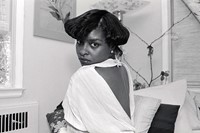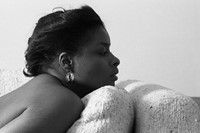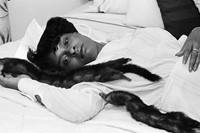As a new zine of Steven Cuffie’s photos is published, his youngest child Marcus talks about the quiet radicalism of photographing Black women as they are
Who is this woman Karen – sexy and suave, coy and playful, so wholly herself? There are only 26 images, but I want more of her; she is clearly a star. This star, Karen, is the namesake of a new zine published by New York Life Gallery (founded by photographer Ethan James Green in 2022). Karen features images originally shot in 1979 by the late photographer Steven Cuffie, and was edited posthumously by his youngest child, Marcus. Karen continues Marcus’s exploration of the extensive archive of images their father left behind. New York Life Gallery first exhibited Cuffie’s photographs in 2022; that show, titled Women, showcased rarely-seen images of lovers, girlfriends, and strangers, all taken in Baltimore.
Born in North Carolina, Steven Cuffie moved to Baltimore as a child. He took up photography as a teen and studied at the University of Maryland before dropping out. He then worked for the city of Baltimore as a photographer for the majority of his life, capturing everything from “city events and crime scenes” to “water main breaks”.
Cuffie exhibited throughout the 70s but stopped in the early 80s – around the time he met Marcus’s mother and had his first child. “Growing up, I knew my dad was a photographer and I did think of him as an artist,” says Marcus today. “But I don’t think I took him as seriously because he was my dad. He took a bunch of pictures of us as kids, so for me it merged with this idea of your parents taking a VHS video of you or iPhone pics just to remember.”
When Marcus first started going through their father’s photographs, the images of women immediately stood out. “They were photos I didn’t see until I was an adult and were unknown parts of his work,” they say. “I felt they had something distinct to them. I was thinking about my dad’s work in conversation with Gordon Parks or Baldwin Lee – really great photographers of Black life.”
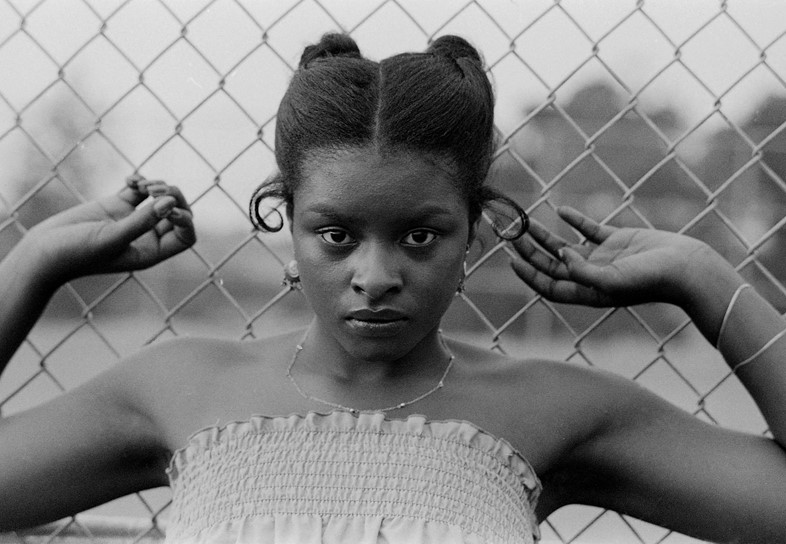
In February of 2023, Marcus returned to Baltimore and started looking through their father’s negatives. “I started to see images that hadn’t been printed before,” they recall. Without the negative prints, Marcus was unable to name many of the women who were in the original photographs, or what their relationship was to his father. When Marcus explored the negatives, six or seven of the same women reoccurred. One of those women was Karen. “It felt like a good starting point to put together a small body of work that spoke about her character. I wanted it to feel like you could connect with her personality.”
It’s impossible not to – her presence is undeniable. Karen against a fence, direct yet withholding, her baby hairs swooped delicately into a pair of spirals. Karen with her eyes averted, her smile bashful. And in one image – Marcus’s favorite – Karen poses with a pair of mink stoles. “There’s an obvious drama,” says Marcus. “It’s interesting to think, ‘Is it just what she had? Is this what my dad was interested in?’ There is a certain staged quality to them. I like that kind of performativity, because it allows there to be more of a conversation [in terms of her] involvement in the making of it.”
For Marcus, the process of editing the zine was intuitive. Marcus wanted Karen to feel like “a bite,” they say. “I didn’t want it to feel too expansive, but I wanted it to feel like you were moving with him.” Marcus organised the images according to a 4–4–4 [structure], where each moment would get four images across [the page], opting for horizontal images because they felt “more filmic.” A narrative naturally emerged.
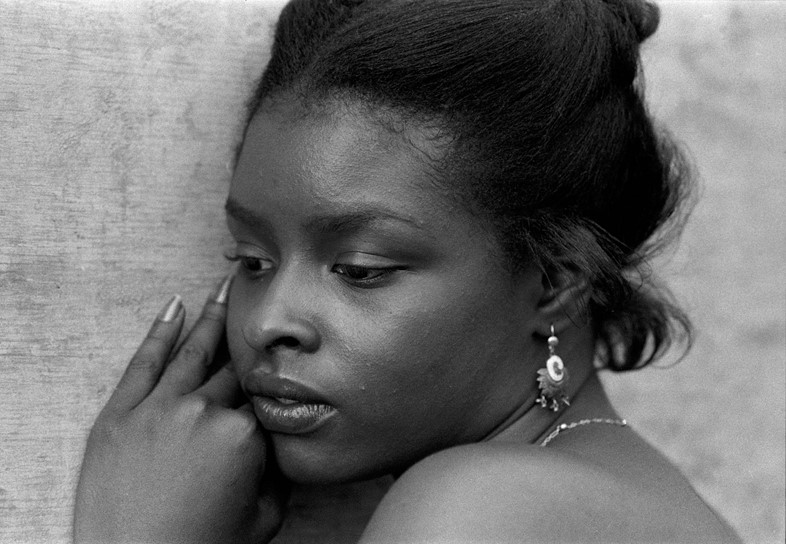
Marcus recognises how their particular perspective influences how they edit their father’s work. “I might not be choosing images my dad would have based on his relationship with the woman,” they add. “There’s often more erotic or sexual imagery, which I sometimes pull away from. I try to make something that feels like you can feel my dad behind the camera, but I try to give a lot of presence to the woman. I try to make sure that a lot of the images feel like you’re confronting her gaze or point of view.” Karen, thrillingly, feels like a confrontation of desires and impulses; it’s clearly a portrait of her, but is unequivocally one of Steven as well. The energy of their exchange pulses in every frame.
Marcus notes how, in the 70s, most photographers who worked with Black women to create intimate or erotic images often depicted them according to a Black power or Blacksploitation sensibility. Yet in Steven’s photographs, Black women aren’t sex symbols or props for the cause, neither Jezebels nor Hottentots, mammies nor Sapphires. Instead, they are embodied co-conspirators and shapeshifters, donning characters and personas as they please.
Karen 1979 by Steven Cuffie is published by New York Life Gallery, and is out now.



